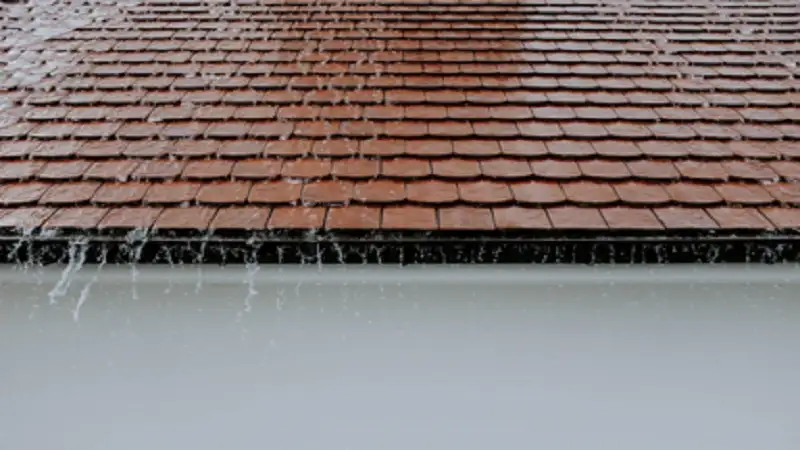The weather isn’t what it used to be. How so? Storms arrive faster, stay longer and do more damage. The patterns are changing, but most homes haven’t. Builders may meet code, but codes don’t always reflect real-life pressure. That’s how homes end up breaking, not because something massive hit them, but because they weren’t truly ready in the first place.
And it’s not just old homes, either. In places like Littleton, CO, where snowfall, wind and hail are seasonal events, even newer houses can show signs of stress. One strong gust, one freeze-thaw cycle and you’ve got shingles flying or leaks starting above your head.
In this blog, we will share why more homes are failing under modern storm conditions, what signs to watch for before trouble starts and how planning ahead with the right help can make all the difference when the weather turns.
When Structure Isn’t Strength
Homes are built to handle stress. At least in theory. But theory doesn’t always meet practice. Materials shift. Installations get rushed. Corners are cut when deadlines loom. And what looks strong on paper can crack when nature decides to test it.
That’s what’s happening now; across the country, insurance claims from wind and hail damage are rising fast.
Roofs take the first hit. They absorb wind, rain, hail, snow and heat. Over time, even small damage accumulates. One loose shingle lets in water. Moisture builds. Rot sets in. Before long, insulation is soaked, beams are warped and mold is spreading.
This is why homeowners are turning to professionals before things get out of hand. Partnering with a reliable Littleton CO roofing company isn’t just about getting new shingles. It’s about knowing your home can take what’s coming. These experts check not just the roof surface, but what’s beneath it. And that includes flashing, underlayment, drainage and attic airflow. If something’s wrong, they catch it early.
Because here’s the truth: once a storm exposes a weakness, it’s too late to wish you’d acted sooner.
When the Storm Isn’t the Only Problem
The weather may start the trouble, but it’s often our habits that let it grow. Many homeowners skip yearly inspections. Others assume “it survived the last storm, so it’s fine now.” But damage is cumulative. It doesn’t reset every spring.
Even worse? We don’t always see the warning signs. Water stains on a ceiling might look like a plumbing issue. A draft near the attic might be blamed on a window. But often, the problem starts at the top. A small breach in the roof lets water in slowly. Over weeks or months, that drip becomes a costly repair.
Storms don’t have to be dramatic to be damaging. Repeated temperature swings can cause materials to expand and contract. That movement weakens seals, pulls nails and creates small openings where water gets in. Over time, these “micro-failures” become real threats.
And then there’s snow. It brings its own set of problems. As it builds up, the added weight can stress the structure. And when it melts? It unevenly and refreezes at the roof’s edge. The result? Ice dams form (and nobody likes that!) These in turn block drainage and push water beneath the shingles.
So you might not realize anything’s wrong until spring. That’s when the attic smells musty or the insulation feels damp. But then that is too late.
It’s not about panic. It’s about preparedness. Ignoring the slow signs is what turns a routine checkup into a total overhaul.
The Cost of Delay Is Always Higher
Ask any contractor and they’ll tell you: fixing small problems is way cheaper than cleaning up big ones. Let’s say a cracked shingle might cost $150 to replace. But a damaged roof deck, soaked insulation and ceiling repairs? That’s thousands. Oh and that doesn’t include the stress of coordinating multiple crews. Or even dealing with insurance back-and-forth.
Worse, many policies won’t cover damage if it’s considered preventable. So if you knew about a leak and didn’t act… you could end up paying for repairs yourself. Not ideal, is it? That’s the hidden cost of delay.
And it’s not just the damage, it’s the liability.
The irony is that most homeowners are proactive in other areas. We change car oil regularly. We install antivirus software. But when it comes to roofs, we wait. Maybe it’s because we can’t see the problem. Maybe it’s because no one wants to climb a ladder. But waiting rarely works in your favor.
Scheduling a professional inspection once a year isn’t overkill. It’s strategy. And it doesn’t have to be a hassle. Local crews know what seasonal weather does to homes in your area. They’ve seen it. Fixed it. Prevented it. All you have to do is let them take a look before the next storm does.
What Homeowners Can Do Right Now
There are simple, smart ways to protect your home today; no construction crew required. Start by walking around the outside of your house after any major weather event. Look for missing shingles, sagging gutters, or exposed wood. Don’t ignore even small changes.
Inside, check the attic. Is there daylight coming through? Any musty smells? Is the insulation dry and evenly laid? These signs can reveal problems you won’t see from the curb.
Also, keep an eye on your ceilings. New stains, bubbling paint or warped sheetrock? They are often red flags. Sure, they might not look urgent. But they’re signs that moisture is coming in somewhere. And that somewhere is probably above your head.
And most importantly, get your roof inspected before storm season begins. Don’t wait for summer heat or winter snow to test your structure. The best time to act is when everything still seems okay. Because that’s exactly when it’s easiest (and cheapest!) to fix.
A Stronger Roof Means a Safer Home
Homes are meant to keep us safe. To shelter us from whatever’s outside. But they can only do that if we care for them before they’re tested.
The modern storm doesn’t care about warranties or square footage. It targets the weak spots, finds the cracks and exposes everything we overlooked. That’s why roofing matters. It’s not just part of your home. It’s your first defense.
So don’t wait for the next weather alert to start thinking about protection. A smart homeowner plans ahead. Fixes small things fast. And trusts the right people to check what they can’t see.
Because when pressure hits, your home shouldn’t break. It should hold strong—and keep you dry, warm, and safe on the other side.

